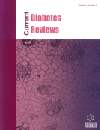
Full text loading...
We use cookies to track usage and preferences.I Understand
Diabetes technology in the form of digital health or medical devices holds a promise for improving the quality of life and glycemic outcomes. A comprehensive insight into diabetes technology and its impact in Saudi Arabia and the MENA region may improve type 1 diabetes mellitus (T1DM) management.
This study aimed to assess the impact of different DM-specific technologies: Insulin pump therapy, continuous glucose monitoring (CGM), and automated insulin delivery system in terms of glycemic control and QoL among T1DM patients in Saudi Arabia and the MENA region.
A systematic literature search was performed in PubMed and Scopus from 2005 until August 2023. The search was based on the PICO strategy, focusing on T1DM patients, diabetes technology, and QoL. The inclusion criteria were studies illustrating the effect of diabetes technologies on glycemic control or quality of life or both among T1DM patients. Systematic reviews, books, letters, or studies, including type 2 diabetes mellitus, were excluded.
From 101 articles, eighteen studies were duplicated, and thirty-three studies were excluded after reading the title and abstract. Of the 50 articles analyzed, twenty-five articles did not meet the inclusion criteria. Therefore, 25 articles involving a total of 3088 participants were enrolled in the study. It was shown that a continuous glucose monitoring system and continuous subcutaneous insulin infusion improved the glycemic control and the QoL of T1DM patients.
There was a positive impact of insulin pumps, continuous glucose monitoring (CGM) systems, and telemedicine in achieving optimal glucose control and better QoL. Further studies are recommended to clarify the significant role of advanced diabetes technologies.

Article metrics loading...

Full text loading...
References


Data & Media loading...
Supplements

